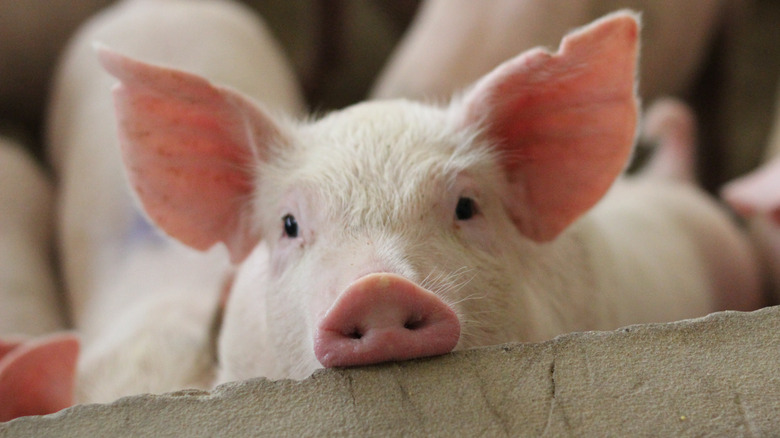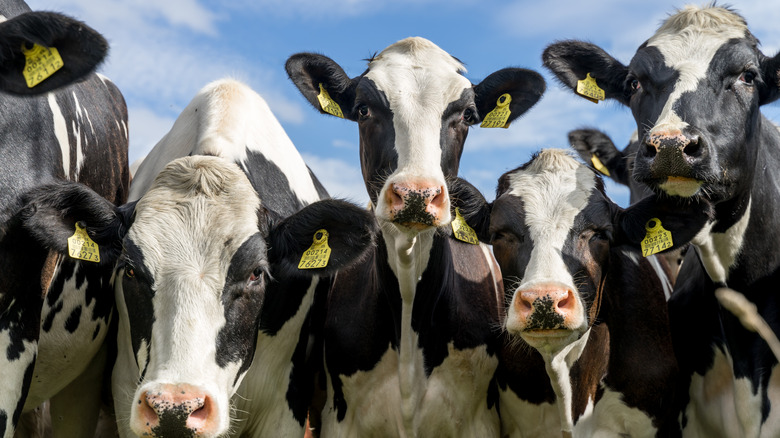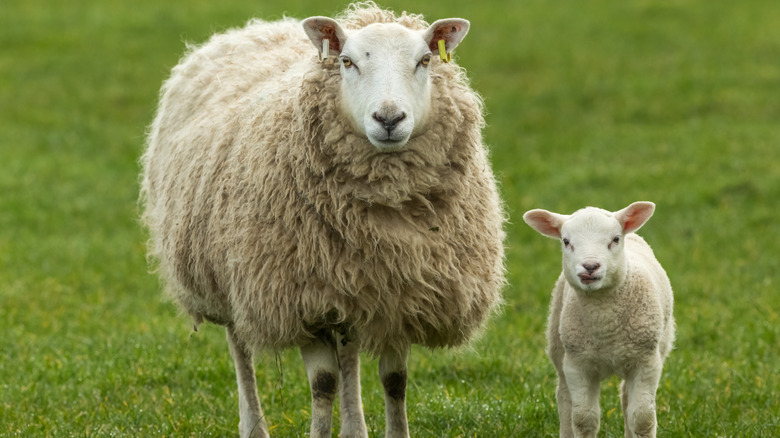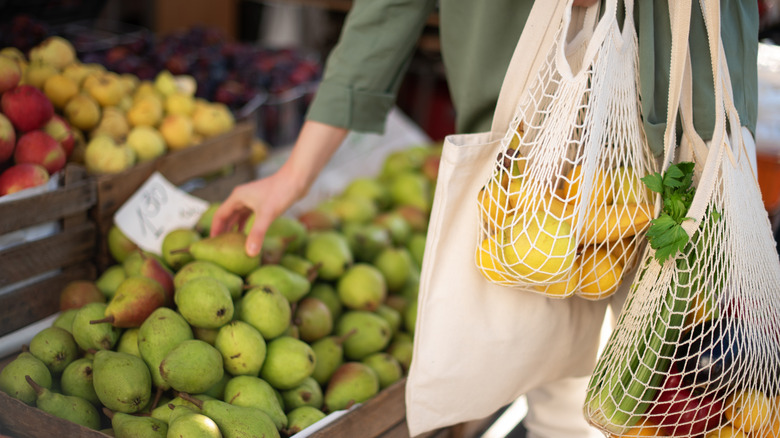Everything You Need To Know About Nose-To-Tail Cooking
Nose-to-tail cooking and eating has been a buzzy term for some years now. It entails just that: using the entire animal and not letting anything go to waste. This is both an example of respecting the animal that gave its life — using it in its entirety — as well as an exercise in sustainability.
Sometimes conflated with the farm-to-table movement, nose-to-tail was coined back in 2004 by Fergus Henderson, the author of "The Whole Beast: Nose To Tail Eating," which specialty focused on cooking an entire pig. As Men's Journal notes, American tastes are typically pretty limited when it comes to what is "edible" or even desirable. While some parts pass the test — chicken breasts and thighs, steak, bacon, and so on — other items, like chicken feet, pig's trotters, or offal, often result in turned up noses and "no thanks."
But why is that? What is the point of killing a living being only to use a small percentage of it? Why are American tastes so myopic? Most other countries do not adhere to such limited manners of consumption. There are enormous amounts of animal products that entirely go to waste, such as head, tongue, heart, and skin, as Men's Journal states. Beyond the ethical considerations of respecting the animal, another enormous benefit of a nose-to-tail diet is the reduction of food waste, which also helps from a perspective of sustainability.
Is nose-to-tail eating healthy?
Proponents of the nose-to-tail ethos stand by the belief that it is how "our ancestors" ate. For many, it's simple to disassociate and compartmentalize from the actuality of food chain. Sterilized, plastic-wrapped, easily edible meat is a commodity that is mass-produced and allows those more squeamish to avoid the reality of the situation: that an animal gave its life, which in turn results in a human's dinner. Adopting a nose-to-tail philosophy lends more respect to the life of the animal and is gentler to the Earth.
There are also numerous nutritional benefits. Going beyond lean meat can have numerous benefits. Hunter & Gather Foods notes that offal meat provides B vitamins, choline, glycine, and iron, while bone and bone marrow provide vitamins A, E, B12, and iron. Ethically, economically, and even in the guise of an aversion to the norm, adopting a nose-to-tail approach can be fulfilling and holistically beneficial.
Frugal and Thriving relates that multiple foods or food products are directly connected to nose-to-tail eating: gelatin, bone broth, and rendered animal fat. Gelatin is derived from animal products and it's used in Jello, desserts, puddings, and much more, while rendered animal fat (such as chicken fat or beef tallow) is much more commonly used than you may realize. Furthermore, Savory Lotus tells us that eating nose-to-tail entails purchasing produce and protein from local farmers and purveyors, which ensures a fresher product, less packaging, and the ability to purchase whole and in bulk, which is better for the wallet, the community, and the purveyor.
How to go about eating nose-to-tail
It should be noted that the majority of these "less desirable" foods are often incredibly affordable; a small container of chicken livers is very cheap. In addition, chicken liver mousse is commonplace in many restaurants and a favorite starter, especially when paired with a sweet condiment and crisp bread. It should also be acknowledged that for many, enjoying a nose-to-tail meal at a restaurant will be much simpler — and quite possibly more delicious — than preparing some of these foods at home. Also, if you're a charcuterie board fan, you may have already unwittingly gone nose-to-tail if you enjoyed some pâté or terrines. You could also start simply, says Bluebird Provisions, by merely eating the skin and fat of the protein you're eating. Bluebird also notes the importance of eating properly and ethically-sourced protein, and that a nose-to-tail diet isn't only restricted to pork, poultry, beef, pork, and lamb. Fish are an excellent gateway into the nose-to-tail concept, such as canned fish like sardines, anchovies, or salmon. The bones can be a great source of glycine and calcium, says Bluebird.
Other ways to reduce and avoid food waste
Paleo Magazine takes nose-to-tail to the next level: Why we should limit the approach to just animal products? The website states that produce actually yields a higher amount of waste than animal products. Don't merely discard items such as carrot greens, fennel fronds, squash seeds, or broccoli stems, according to Paleo Magazine – they can all be used in efficient and delicious ways. Two statistics that really help shed light on the issue at hand from Paleo: The average North American throws away $2,000 worth of food per year, and about 21% of landfill volume is food waste. Might make you look at those potato peels a bit differently from now on.
Food24 acknowledges the toll that meat consumption has put on the environment, in addition to the large-scale factory raising of the animals, which has come under criticism for being problematic, unsafe, and harmful to the animals. Being conscious and more responsible in regard to meat consumption is an important topic that food writer Alicia Kennedy often writes about with a stunning, admirable veracity. For many, meat is a luxury, but for plenty of Americans, it's a daily (or multiple times per day) occurrence. This is yet another reason that the nose-to-tail movement has gained such a following: It allows for more responsibly-raised animals and fully utilizes the whole animal, letting none of it go to waste. Being fully ethical, waste-free, and sustainable is quite the challenge, but every small step is worth it — for ourselves, and for generations to come.



